Inside Out 2 made waves at the box office, captivating audiences and raking in millions - and it's now available to watch on Disney+ from the comfort of your sofa. The film introduces emotions and universal struggles that resonate with everyone, including us parents.
More importantly, the sequel shines a light on children's mental health. Media often labels Gen Z as the loneliest generation ever, making this theme all the more relevant.
Let's face it, we've all been like Riley (the main character) at one point—insecure and self-conscious. In this sequel, she's 13 and going through puberty, mirroring the experiences of many kids today and highlighting the mental health struggle that children can face, particularly at this time in their lives. In fact half of all mental health problems in the UK start by the age of 14. The WHO warns that ignoring these issues can lead to long-term consequences, emphasising the need to start these conversations early.
We spoke to parenting coach and bestselling author Anita Cleare ahead of the release of her new book, “How to Get Your Teenager Out of Their Bedroom,” to discuss why Inside Out 2 is a must watch movie for both parents and youngsters, how the movie can spark conversations about emotions and make sure our kids know we're here for them, no matter what.
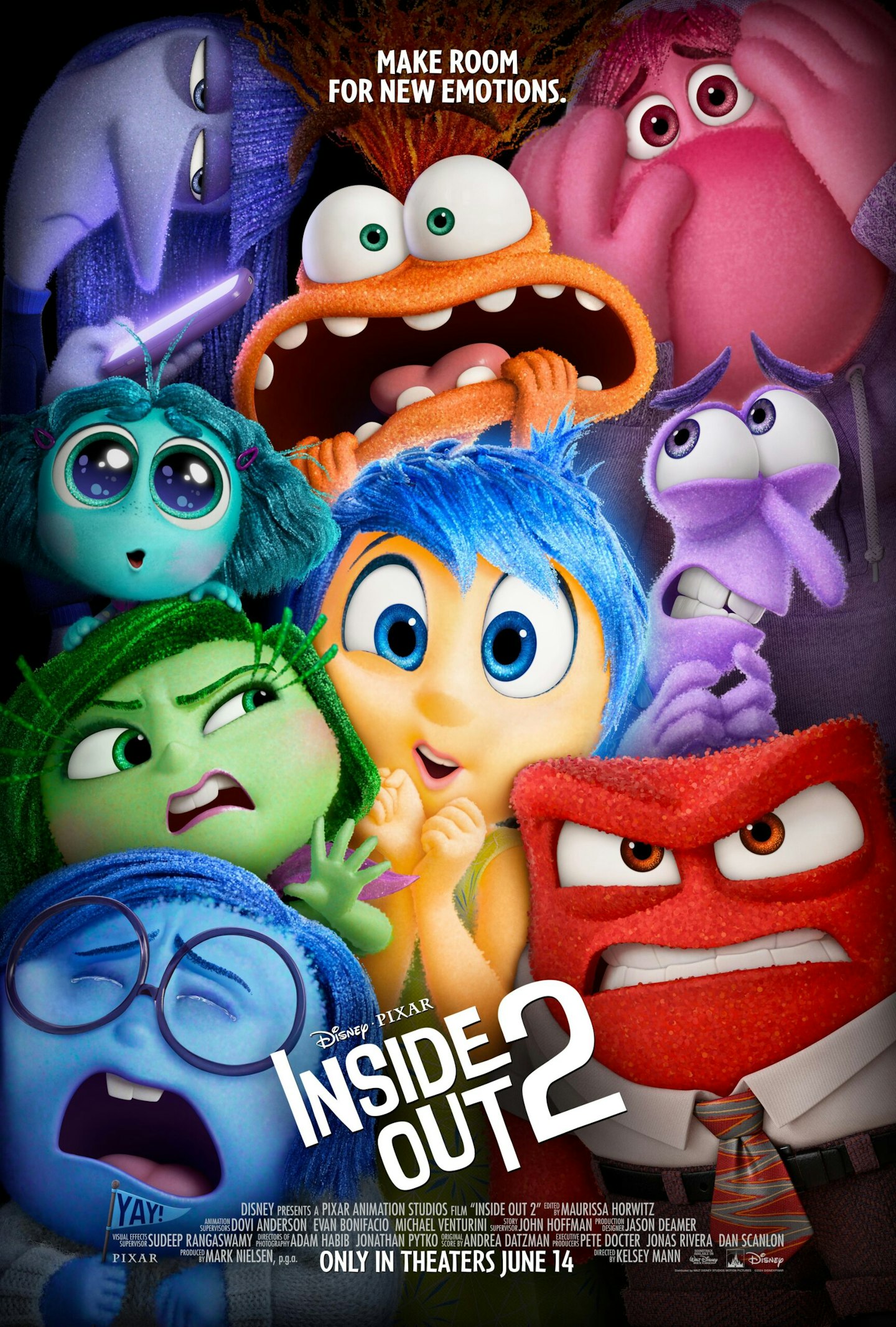
What are the new emotions in Inside Out 2?
In this sequel, Pixar has introduced four new emotions—anxiety, envy, embarrassment, and ennui—as characters in the film. They collaborated closely with psychologist Lisa Damour, specialising in teenagers, and emotion scientist Dacher Keltner to authentically portray these emotions, rooted in the science of emotions. These emotions were chosen because they resonate with the thoughts and feelings that children experience as they enter puberty.
Is Inside Out 2 out yet in the UK?
Yes! Inside Out 2 had an exclusive cinema release in the UK on June 14, 2024 - and it's now available to watch on streaming platform Disney+.
What age is Inside Out 2 for?
The British Board of Film Classification (BBFC) has confirmed the rating for Inside Out 2 is U and should be suitable for all ages above four.
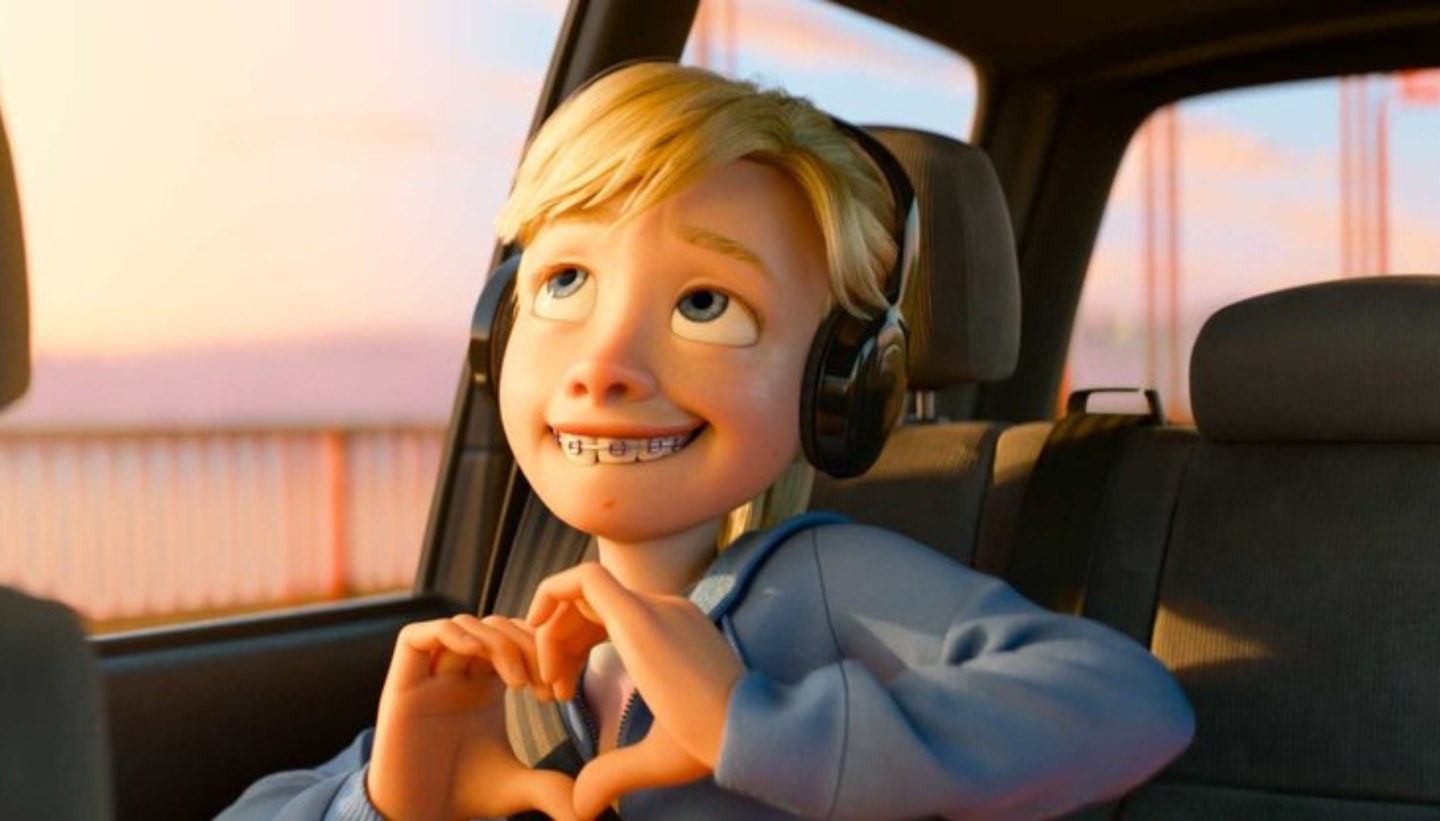
Why is Inside Out 2 a must-see for both parents and children?
We hear a lot these days about how tough it is for children. Surveys show that 42% of Gen Z, aged 12-27, are dealing with issues like anxiety, one of the new emotions featured in the film.
Parenting expert Anita encourages parents to use this opportunity to spend quality time with their kids, “Teens are often reluctant to spend time with their parents, which can make it hard to maintain a good relationship through the tricky teenage years. Watching films together can be a great way to bridge that divide. Films that have big personalities and lots of humour and touch on social issues are especially good. When we laugh alongside our kids, it sends the signal that we are enjoying their company - which is great for relationship-building.”
The movie might even spark curiosity and discussions about unfamiliar emotions your children might be feeling, even in younger kids.
Why are children reluctant to open up to their parents?
Children's biggest fear might be feeling like they'll disappoint you. One of the toughest things for them is approaching us after making a mistake or a poor choice. We’ve all been there, and our kids are no different. If there's someone who understands this, it should be us. They often avoid talking because they fear seeing our disappointment or assume we're too busy to listen.
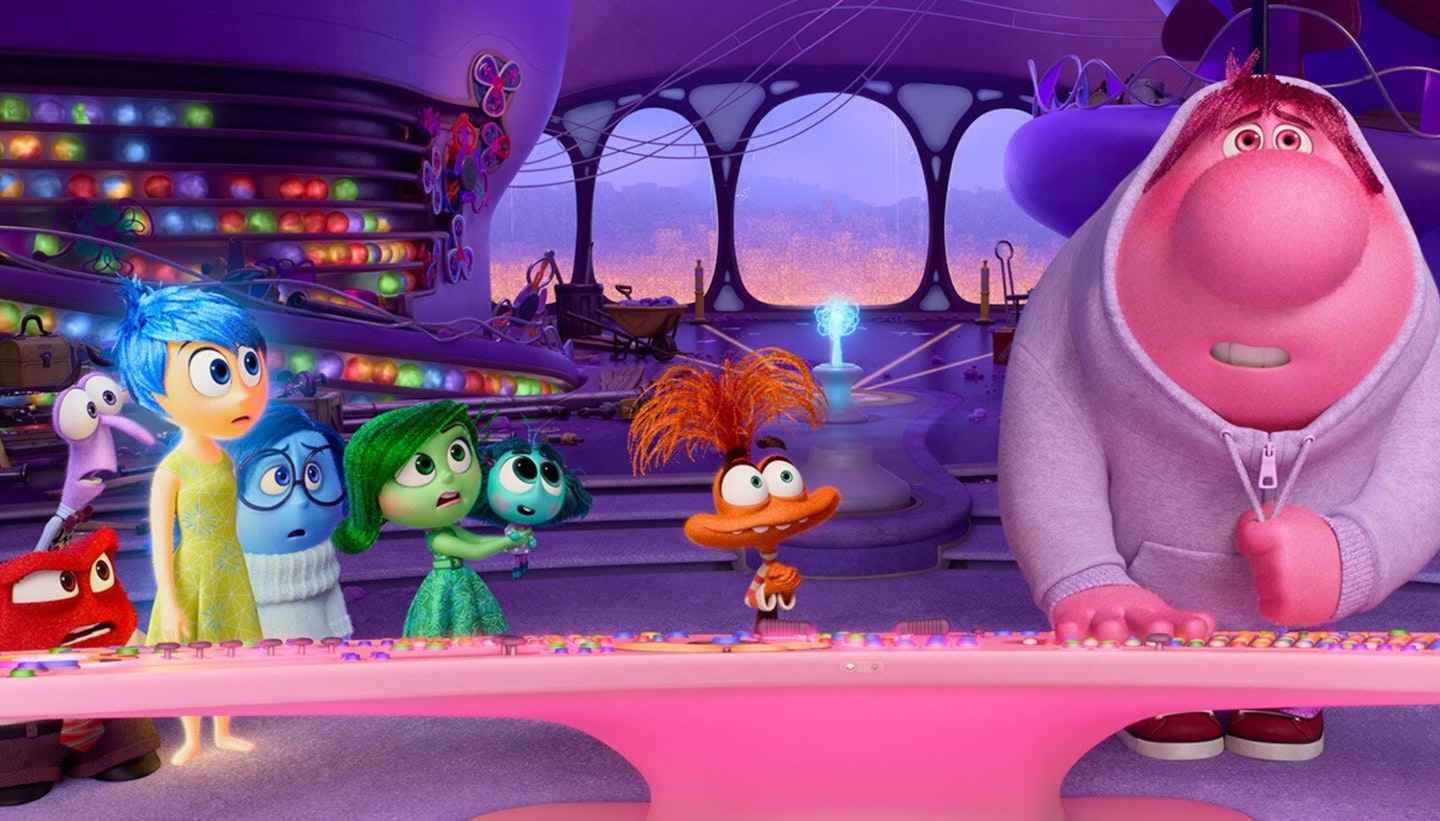
How can parents use Inside Out 2 to get their children talking about their emotions and struggles?
Kids can shy away from discussing emotional issues with their parents and can shut down when faced with direct questions. It’s similar to how Riley responds to her mum in the movie trailer asking "How was camp?" with a simple "It was good," while internally battling her emotions about what's really going on in her life.
Anita says, “Inside Out 2 turns emotions into characters, it's an especially effective film for sparking conversations about what it feels like to be a teenager. Being indirect and discussing characters in a film is a clever way to navigate children defensiveness. Kids often engage enthusiastically in conversations about plot lines when they might withdraw if the conversation were about them personally. These discussions can really help parents stay connected with their teen’s thoughts and feelings.”
It’s also a positive way to reassure your kids that emotions don’t define who they are.
How can the introduction of new emotions help children understand their own feelings better?
Three in five young people in the UK have experienced a mental health problem or are close to someone who has, according to a survey by the mental health charity Mind. With everything they’re dealing with—school pressure, social media, friendships—it’s no wonder they need our support more than ever.
“Anxiety, embarrassment, envy, and ennui play starring roles in a teen’s progress toward independence. The teenage phase is all about working out who they are, how they fit in, and taking control of their lives and decisions.
That can be pretty scary (anxiety). Teens worry intensely about how other people perceive them (embarrassment) and often experience a dip in self-esteem, feeling like everyone else is getting things right when they aren’t (envy). Sometimes the easiest thing to do is to walk away from it all, hole up in their bedrooms, and hope it all goes away (ennui).”
Just like in Inside Out 2, we can see this playing out inside Riley’s brain.
“There is a huge amount of last minute building work going on in the teenage brain to get it ready for adulthood. This work progresses from the back to the front, which means the back and middle areas of the brain (which govern emotions and threat responses) are all souped up and firing on all cylinders, while the front thinking part of a teen’s brain is still operating on 3G. That makes teens especially prone to anxiety, and their emotions really intense. In essence, their highs are higher, and their lows are lower, and the rational part of their brain is easily overwhelmed—which can be an uncomfortable ride for both teens and parents,” Anita explains.
In what ways can Inside Out 2 support communication and understanding between parents and their children?
By focusing on the big four emotions, Inside Out 2 provides parents and children with a shared, blame-free vocabulary for discussing difficult thoughts and big emotions. When teens struggle to articulate their feelings, parents can help initiate a conversation by guessing and naming the emotions they observe.
Anita suggests doing this by saying, “It looks like anxiety is in the driving seat in your brain right now.” Alternatively, parents could refer back to the film to open a dialogue, saying, “Remember when Riley tried to impress the older kids at summer camp and got embarrassed? That sounds a bit similar to what you’re going through now. How could you bring back a sense of balance in your brain?”
What lessons can parents take from Inside Out 2?
Balance is key. Children's emotions are intense, but no single emotion should dominate. Anita’s favourite character, ennui, shows how downtime helps teens regulate emotions amidst constant stimulation.
“Kids can find it hard to motivate themselves and from the outside it can look to parents like they are just being lazy. But ennui plays a really important role in helping teens down regulate their emotional intensity and smoothing their highs and lows. So, next time it looks like your kid is lying around doing nothing, maybe it’s just the case that ennui is playing its role in giving their brain a break from the frenetic over-stimulation of their other big emotions?,” she concludes.
Anita’s book, “How to Get Your Teenager Out of Their Bedroom,” releases in September 2024. You can pre-order from Amazon today. It's got practical tips for nurturing your teen’s well-being and building a strong parent-child bond.
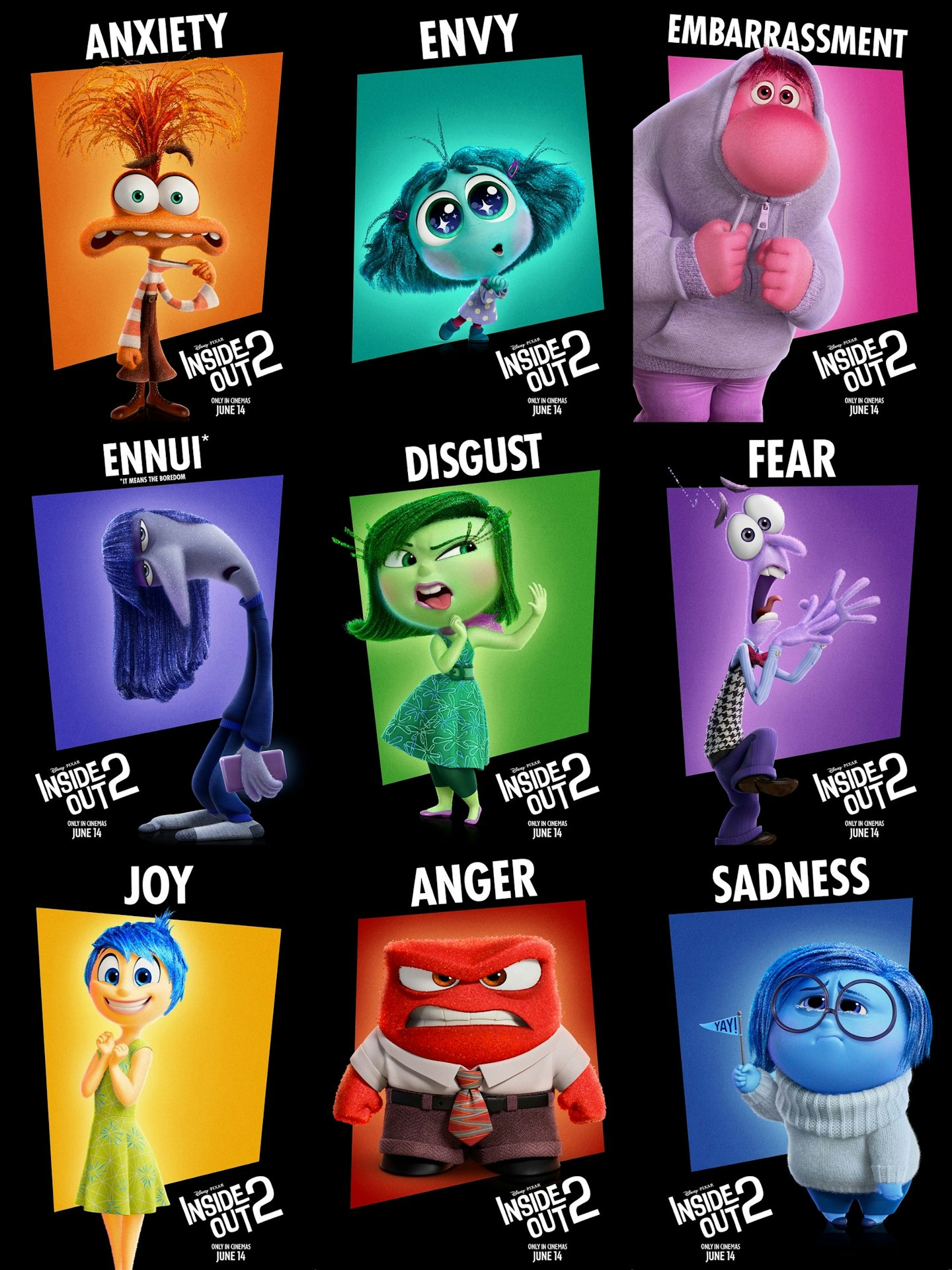
Meet the cast of Inside Out 2
Curious about who voices Riley and the emotions in this Pixar sequel? Here’s the lineup:
-
Kensington Tallman as Riley
-
Amy Poehler as Joy
-
Phyllis Smith as Sadness
-
Lewis Black as Anger
-
Tony Hale as Fear
-
Liza Lapira as Disgust
-
Maya Hawke as Anxiety
-
Ayo Edebiri as Envy
-
Adèle Exarchopoulos as Ennui
-
Paul Walter Hauser as Embarrassment
-
June Squibb as Nostalgia
Directed by Kelsey Mann and written by Meg LeFauve and Dave Holstein.
Best Inside Out 2 toys and gifts:
Toymakers have launched new collections featuring your kids' favourite emotions and some new ones, too! We’ve rounded up some Inside Out 2 toys and gifts that your kids would love to see in their Santa sacks this year...
Best Inside Out 2 gift if they haven't seen the film yet
 Amazon
AmazonDisney and Pixar's Inside out 2 returns to the mind of newly minted teenage Riley just as headquarters is undergoing a sudden demolition to make room for something entirely unexpected: new Emotions! Joy, Sadness, Anger, Fear and Disgust, who've been running a successful operation, aren't sure how to feel when Anxiety shows up - and she's not alone!
If they've seen the first film but not the second the Inside Out 2 DVD is a must - knowing the full story will help inspire them when playing with their Inside Out toys. Kids who saw it on the big screen will also want to watch it over and over again, so this will definitely make a great gift for them too. not to mention the perfect film for the whole family to watch and enjoy together, with pleny of life lessons to learn along the way.
One reviewer said: "Grandson has been wanting it for ages so he's pleased it's here. Great film as we all watched it as a family."
Another reviewer said: "A now teenage Riley has new emotions including Anxiety who threatens to take over Riley's mind. Fun and amusing sequel to the 2016 Pixar classic Inside Out. Very imaginative and clever exploring Riley's mind and well animated with good voice over performances. If you liked the original you should enjoy this solid sequel."
Best Inside Out 2 toy gift for aspiring collectors
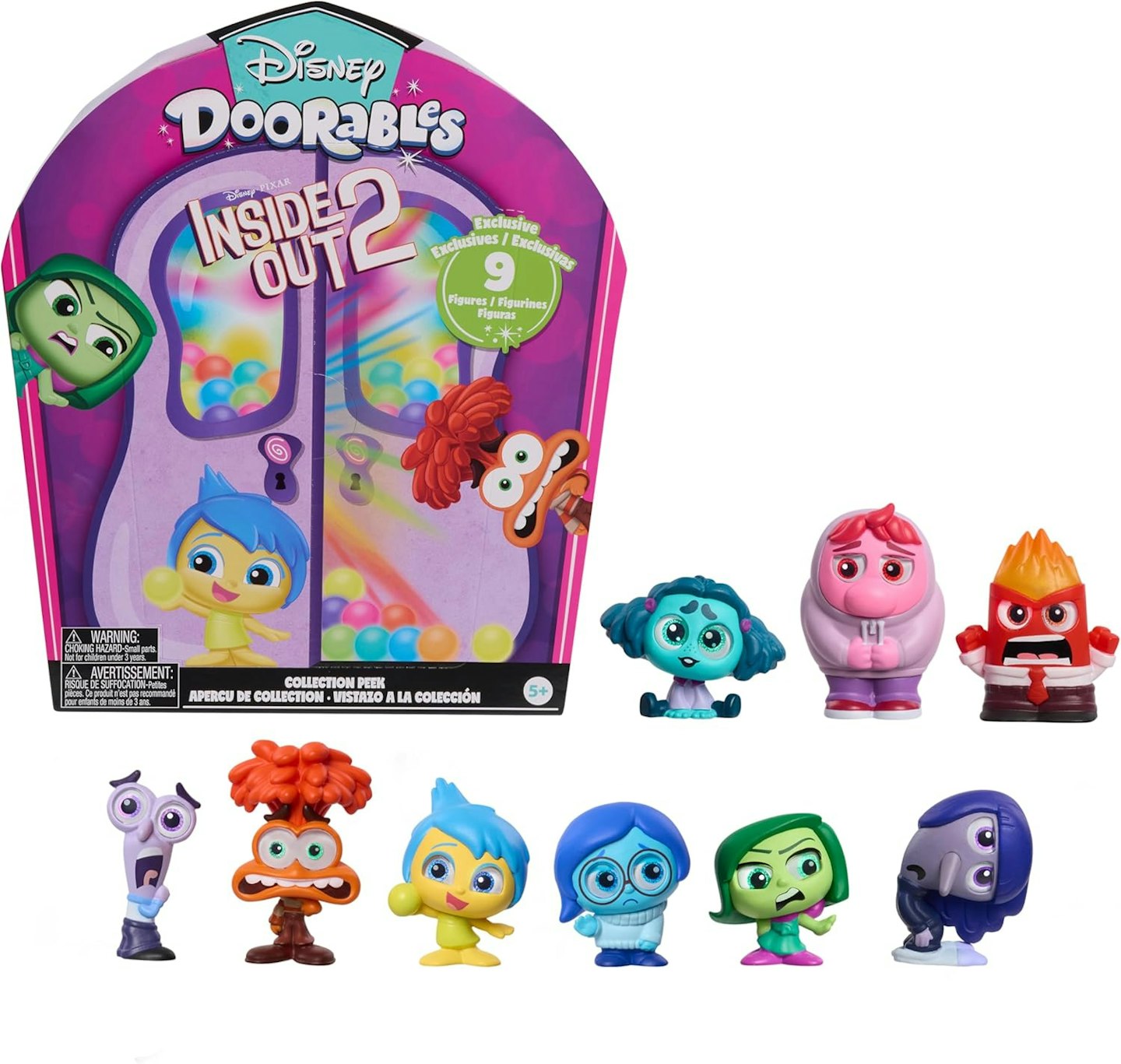 Amazon
AmazonA fun toy gift for budding collectors - behind every door they'll discover a memorable surprise, with 9 little toy figures inspired by Disney and Pixar’s hit sequel, Inside Out 2. Characters include Joy, Anger, Sadness, Disgust, Fear, Embarrassment, Envy, Anxiety, and Ennui. Each collectible figure stands approximately 1.5 inches tall and features signature Doorables stylized detailing and glittery eyes.
One reviewer said: "They are tiny but very detailed. My granddaughter loved them at first sight! Anything Inside Out 2 in figures is rare at this time. She was happy with them and that’s the important thing!"
Best Inside Out 2 toy gift for sticker-lovers
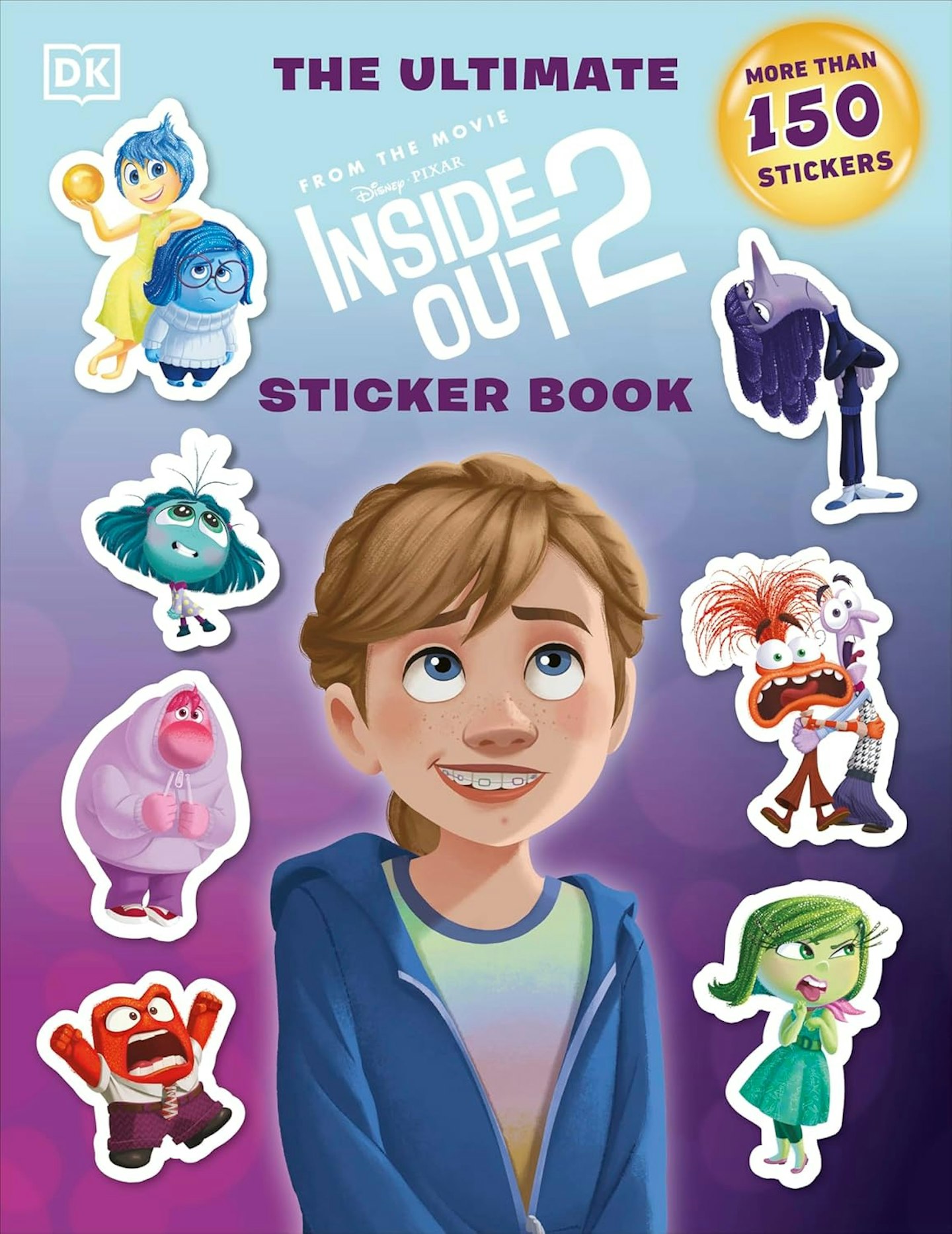 Amazon
AmazonFeaturing beautiful images and artwork, this ultimate sticker book by DK includes more than 100 stickers for your kids to enjoy, plus fun facts about all their favourite characters so that they can relive the story and get back inside Riley's head. There are fun sticker activities included in the book, with extra sticker just for fun!
One reviewer said: "This is a really fun book for any fans of the movie. However, it should be noted that it is a sticker book intended for the stickers (which come with it) to be stuck on the assigned spaces in the book. There are some smaller stickers left over which your children (or you!) can use for whatever they want, but the largest stickers are for in the book. This eight page book introduces the new characters and tells you a little bit about the movie, including photo stickers of scenes. I guess I should’ve checked this beforehand as it was kind of a spoiler alert before the movie. I think the retail price of £4.99 is kind of expensive. But if you can get it on a deal, it’s a fun quick book for any Disney Pixar fan. I would give an age recommendation of 4 to 9 years old for this book. Little ones who need help with the stickers. Enjoy!"
Best Inside Out 2 toy gift for self-expression
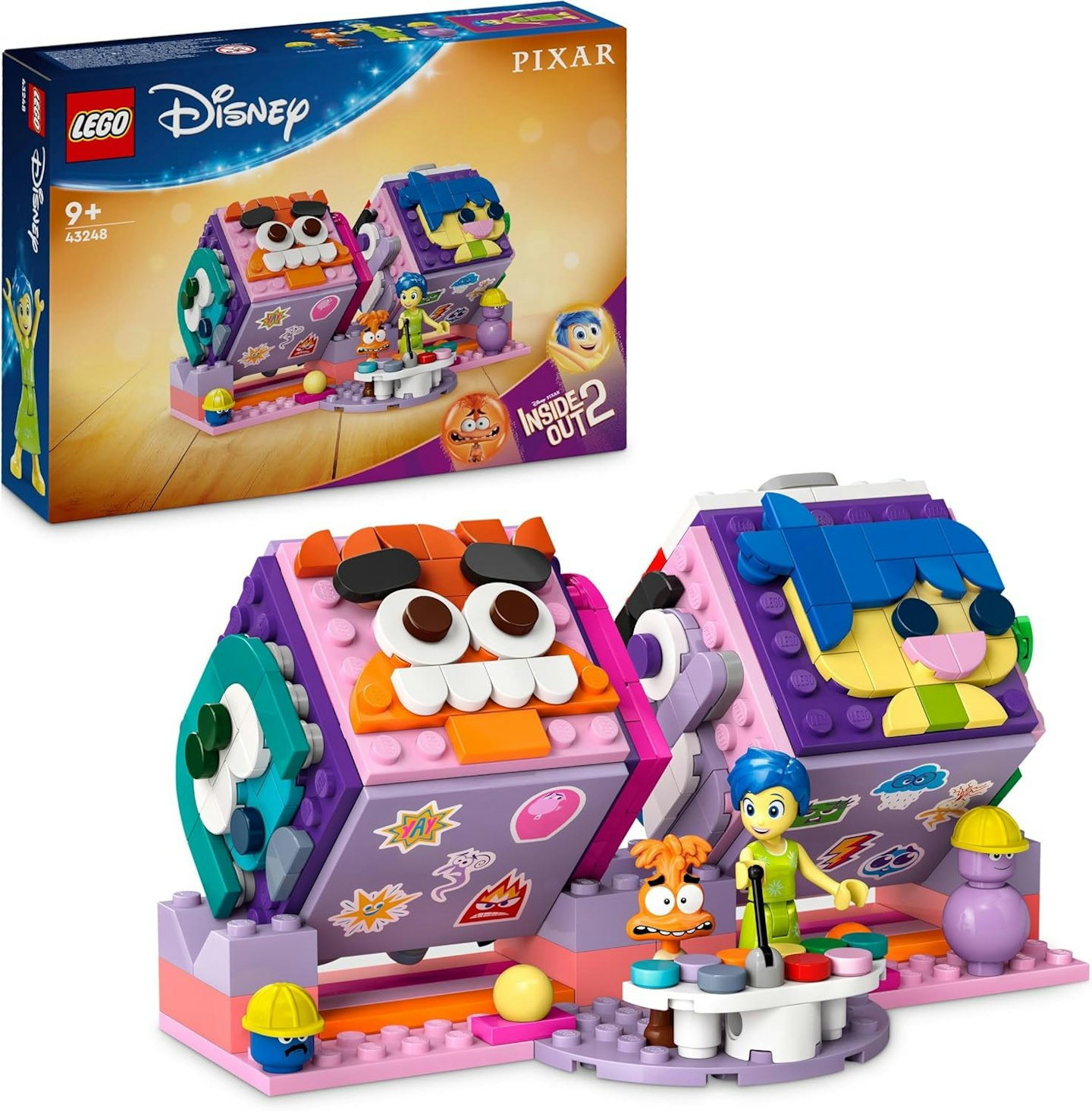 Amazon
AmazonFor kids who love LEGO this is the perfect buildable gift. In the Playset you get 2 buildable cubes for creative play, each with a space for little treasures. You also get 9 mood plates and a display stand to hold the cubes. kids will love that Inside Out Joy and Anxiety LEGO Disney mini-doll figures with matching coloured memory balls are included, as well as Foreman and Margie LEGO Disney figures with hard hats.
Kids also enjoy an easy and intuitive building adventure with the LEGO Builder app, where they can zoom in and rotate models in 3D, save sets and track their progress. We like that the toy helps inspire older children’s emotional growth through creative play as they decorate and set up the cubes to match their mood. The set is nice and portable too, so you can take it with you on playdates!
One reviewer said: "The kids loved it, easy to follow the build, they did most of it themselves, really helps improve their s.t.e.m skills , wish there was more to the inside out 2 sets."
Best Inside Out 2 toy gift to clip on a bag or buggy
 Smyths Toys
Smyths Toyswww.smythstoys.com
We love that these cute character clip-on plushies can be loved by little ones and older kids. Suitable for fans from age 3, they can be clipped onto a buggy, car seat or school bag! They're affordable and collectable, so the more they get the more they'll be able to express their moods.
Each blind box contains one of nine plushies inspired by Disney and Pixar's Inside Out 2 characters. You won't know which one you'll be buying as they are sold separately and come in a blind box, but they could get any of the following lovable characters - Joy, Sadness, Anger, Fear, Disgust, Embarrassment, Anxiety, Envy, or Ennui. They are 11cm and made from super-soft fabrics with embroidered features and personality-driven expressions.
Will there be an Inside Out 3?
If you are already eager to know if there’s a third instalment, Director Mann hinted in one of his media interviews that there's a stockpile of concepts ready for a potential third instalment. What themes it will cover, we shall all have to wait and see. But for now, watch Inside Out 2 trailer.
If you think that your teen is experiencing poor maternal mental health, Young Minds, the mental health charity, has a confidential parents' helpline. Call them on 0808 802 5544 (9.30am to 4pm Monday to Friday). You can also access mental health information for young people for free from Mind’s website.
About the expert
Anita Cleare MA AdvDipis a parenting speaker, writer and coach who supports working parents to balance successful careers with being a parent. With an academic background in developmental psychology, Anita has a talent for helping parents to step back and reflect on parent-child dynamics and implement small changes that make a huge difference. An accredited Triple P® parenting facilitator, Anita has been working in family support for 20 years.
About the author
Anne Lora Scagliusi is a Senior Digital Writer at Mother & Baby. She is a Scotland-based journalist with over a decade of international writing experience, specialising in women’s health, maternal mental health, and wellness. Anne’s work has been featured in Vanity Fair, Marie Claire, and Glamour and has appeared on several Vogue global editions. She is mum to a one-year-old bambino and lives between Italy and the UK.
